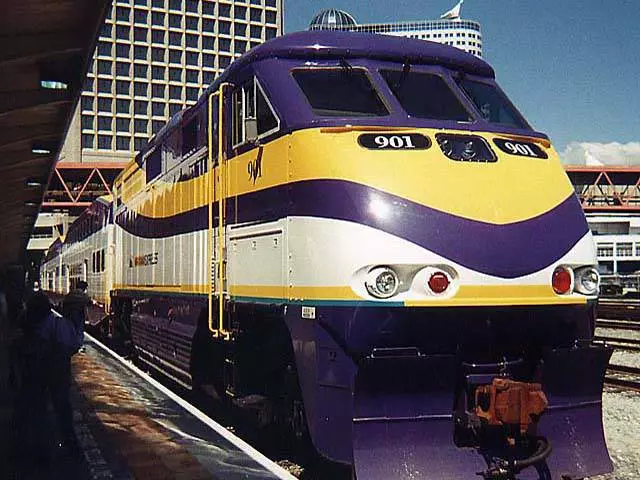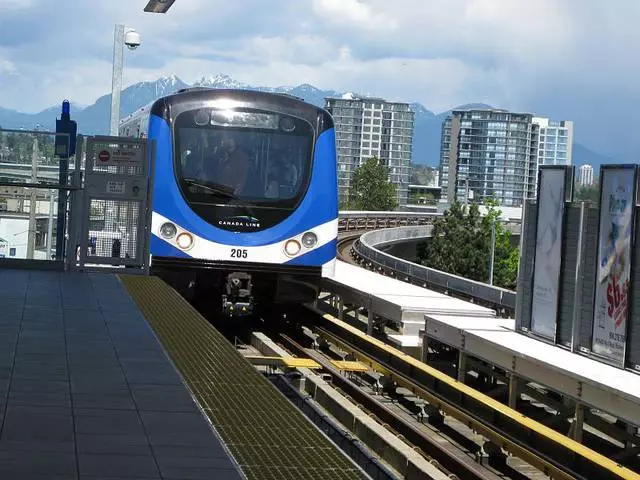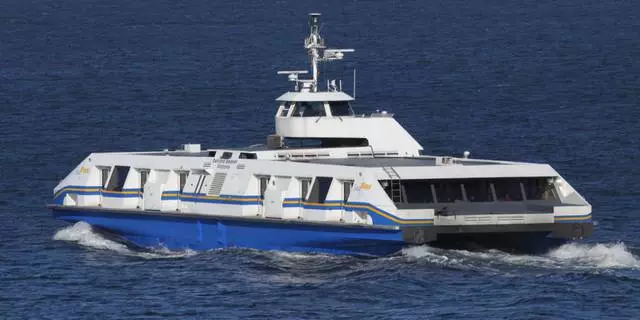As for public transport in Vancouver, these are buses, trolley buses, West Coast Express suburban railway, Sky TRAIN lightning metro station and SEA Bus passenger ferries. For the most part, the State Firm Trans Link is headed by urban and suburban land transportations in Vancouver.
The public transport system consists of three zones for which the price for travel is determined. The cost of tickets is reduced after 18:30 every day, as well as on weekends and holidays.
A ticket for any of the zones can be exchanged for transfers, which is valid in the first hour and a half for any type of transport and for any direction of TransLink. For travelers, it is recommended to acquire a one-day travel, which will make it possible not to break the head over the calculations of the cost of travel through different transport zones.
When traveling from the island is the location of Vancouver Airport - additional airport tariff is also superimposed - 5.00 CAD, the price increases from 7.75 per zone to 10.50 CAD - for three.
You can purchase tickets, blocks and tickets for a month possible in the kiosks located at the transfer stations, and in addition, they are sold in some of the grocery stores.
For more information on transport areas, traffic schedules and prices should be addressed to the TRANS LINK website.
Buses and trolley buses
The most common urban transport type is buses and trolley buses. Stops are located approximately every two hundred meters. On any of them you can see a schedule of motion. Entrance to buses and trolleybuses - through front doors. You should pay directly to the driver, it also receives transit tickets for the following transfers. It should be aware that drivers do not give out and do not take one-charge coins. To warn the driver about what you need to get away, shoot the cord, which is extended by the cabin above the windows.
Suburban trains
The suburban passenger railway is West Coast Express - created in the 1995th, and with its help set up a Vancouver message with suburbs. These trains go on weekdays - in the evening and morning hours, at peak hours. During the day, five such trains are passing in a common account.
The price for travel in the suburban train is determined depending on the length of the route, you can learn it using the TRANS LINK website. This transport uses the Waterfront station, and the main in Vancouver is the Pacific Central Railway Station.

Light metro
The city has the longest in the light of the entire automatic system of the terrestrial metro - Sky Train.
This high-speed, penetrating the entire city of the monorail transport system was opened in 1986. The number of cars in the train - from two to six, the trains move along the rails, which is held above the ground by means of reinforced concrete pylons. In the central part of the city, the road disappears on earth - here are some central stations. The system has only three lines (Expoline, Millenniumline and Canadaline) and forty-seven stations. All of them have one common end station - Waterfront. It is located on the ocean coast, in the north-west direction from the central part of Vancouver. Through this metro station, Sky Train is joined with the West Coast Express suburban railway line, which was previously discussed. On the road through the Burrard Bay in Northshore, you can go from the subway to the ferries SEA BUS. And from the Bridgeport station there is a branch that leads to the airport.

In addition, the Sky Train system includes the Sky Bridge metro station, which has been operated since 1990. This is to this day - the longest guy bridge, which is used only by the metropolitan.
The subway travel is paid by the same tickets that are used when traveling on buses and trolleybuses, the price depends on how many zones passenger will cross on the way. Tickets are sold at Sky Train stations in automatic cash desks, where you can pay plastic cards or cash.
Ferry
With the sea bus ferry, the central and northern parts of the city are connected, he overcomes Barrard Bay for about fifteen minutes. The interval of the movement of ferries - fifteen minutes during the daytime and half an hour - in the evening. Each such vehicle can accommodate four hundred passengers.

The network has two ferry terminals: at Waterfront station in the central part of the city (here the ferry line has a docking with the bus network, as well as the subway and suburban railway), as well as on Lonsdale Quay, located in the north of Vancouver.
Taxi
Taxi in Vancouver is rather fast and convenient, however, the lowest way to move. 588 taxi service drives around the city. This amount does not change since 1986 due to local restrictions. All cars are licensed and have counters. The fare depends on the length of the route and the time spent on the road. On average, this picture is obtained: when landing pays approximately 2.25 CAD, for each kilometer of the way - about 3 CAD, per minute of idle time - 0.37 CAD. For luggage you do not need to pay. The road from the airport to the center will cost you approximately 35 CAD. Taxi can be taken in the parking lot or to make a telephone order - in the latter case you will have to further pay for the passage of the car to the place of your location.
